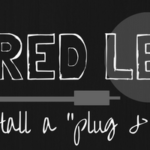One of the trickiest parts of working with LEDs is understanding how to best manage and supply power to your lighting system. Our customer service team spends time each day helping clients to calculate power requirements, answering questions about the difference between power supplies and transformers, and providing advice on how to avoid voltage drop. We pride ourselves on being able to explain things in an educated and efficient manner which is simple enough for anyone to comprehend.
Of course, LEDs remain part of a rapidly evolving industry and there are always new things to be learned and discovered. So when it comes to our more in-depth technical questions or compatibility conundrums, we turn to our resident electrical wizard and engineering manager, Tanner Leland. This week Tanner takes some time to answer a few of our more technical questions about powering LEDs.
So read along and get ready to learn, because class is now in session!
Question: We hear a lot about “transformers” in the realm of low voltage LEDs. What is a transformer, what does it do?
Answer: A transformer is simply a device which uses Faraday’s Principle of Electromagnetism to transform one voltage into another- for example, taking 120V from home power lines down to an LED-friendly 12V or 24V.
In the vernacular of Inspired LED, a transformer refers to a hardwired dimmable 120VAC to low voltage DC transformer. We have two styles:
One, which we refer to as our magnetic, or M-series, is simply a large laminated steel core transformer that converts 120VAC to 12VAC using electromagnetic coils. An output rectifier then rectifies the 12VAC to 12VDC, and primary and secondary fuses are added in for protection.
The second style, which we refer to as our electronic, or E-series, is smaller because it includes an array of support circuitry designed to optimize a much smaller powdered iron core transformer. The advantage of this model is that it is lighter, more compact, and can be used with a wider range of dimmers. Beyond that, the resulting output is the same between the two transformer styles.
Question: How is a transformer different from a plug-in power supply?
 Answer: A plug-in power supply is technically a transformer- it performs the same job as the transformers described above, taking the 120VAC from a standard home outlet, and converting it down to an LED compatible 12 or 24 volts.
Answer: A plug-in power supply is technically a transformer- it performs the same job as the transformers described above, taking the 120VAC from a standard home outlet, and converting it down to an LED compatible 12 or 24 volts.
But at inspired LED, to simplify communication, we use the term “power supply” specifically to refer to non-dimmable switch-mode power supplies which plug into a standard wall outlet. Like the E-series electronic transformer, these plug-in power supplies include internal support circuitry which allows them to use smaller powdered iron core transformers to convert between 120VAC and 12VDC. The power supplies take this one step further by filtering out any fluctuations from the original 120VAC input and the 12VDC output.
The result is a very stable, clean 12VDC output that is relatively immune to power fluctuations. The most discerning users will also find that this high quality electrical output is reflected in the light output. Of course, the drawback to using a plug-in power supply is that it can’t be dimmed from a high voltage input (a wall switch). Fortunately, we have many low voltage dimmers which can be wired in after the power supply, including our push-button dimmer for simple under-cabinet control, or our dimmer with wireless remote for convenient control from anywhere in the room. If you want to achieve the look of a wall dimmer with a plug in power supply, we recommend using our Independence Dimmer or TRIAC analyzer system.
Question: What happens if my power supply or transformer is not large enough for my LED system? What happens if it is too large?
Answer: Finding the appropriate power source is arguably one of the more difficult, and certainly more important aspects of building an LED system. To help our customers determine the power requirements for a particular layout, we offer a power calculation chart on our website. By identifying the length and brightness level for each LED strip or panel, this chart can provide a conservative estimate for the size of the power supply or transformer you will need.
In general you will want to use a power source which runs at 12 Volts DC, but offers more wattage or amperage than your system actually requires. We typically recommend a buffer zone of at least 10%. So if your lighting system draws exactly 3.8 AMPs, for example, you will want to use our next largest transformer (the 5 AMP) to leave room for minor fluctuations, possible miscalculations, or future expansions to the system.
If you were to use a 3.8 AMP power supply with a system that draws 4 AMPs, this would overload the power supply, activating an internal shut-down mechanism. As a result, the LEDs appear to pulse on and off as the power supply repeatedly attempts and fails to provide the amperage required. This safety feature prevents the power supply from wearing out or overheating; it does not damage the LEDs, but it is an indicator that more power is required to keep your lights running.
The rare exception to this over-powering rule comes when using hardwire transformers. Since these do not contain the regulatory circuitry of a plug-in power supply, there can be a greater variation in voltage output, which may cause issues like flickering if a minimum load is not met. The manufacturers of our magnetic transformers recommend meeting a minimum load of at least 50%, however the specific recommendations can vary greatly based upon make and model, so there is no universal rule of thumb here. Our customer service representatives and design team members can help to provide more specific guidelines for your unique system.
Question: What is voltage drop?
Answer: Voltage drop is a term used to describe the dissipation or loss of voltage across an element, such as an LED or a resistor. Each time the flow of electricity is forced to travel through a point of resistance, some voltage is lost. This means that if a light strip or panel is particularly long, it will cause the lights closest to your power source to be noticeably brighter than those farthest away.
 We’ve fine-tuned the way voltage is utilized within our LED circuits, so as a user you only need to concern yourself with voltage drop on the way to the LED circuits. This can happen as voltage travels through wires, connection points, or the flexible LED strips themselves.
We’ve fine-tuned the way voltage is utilized within our LED circuits, so as a user you only need to concern yourself with voltage drop on the way to the LED circuits. This can happen as voltage travels through wires, connection points, or the flexible LED strips themselves.
Copper wires are considered great conductors; electricity moves through them easily and efficiently without much loss. The inverse of this view is to say that copper wires are very poor resistors. But they are resistors none the less, since no material is a perfect conductor. There is always some loss of efficiency. When current flows through a wire, voltage is dissipated across these unintentional resistors according to Ohm’s Law (voltage drop = current * resistance). The resistance across a copper wire can be reduced in two ways: by shortening the wire, or by increasing the cross-sectional area of the wire (using thicker 16 AWG rather than 22AWG, for instance). With properly sized wires, the effects of voltage drop can be minimized.
Connections points can also serve as a source of voltage drop. Depending on the size and the quality of the connection, the loss can be negligible or highly pronounced. We try to select connectors that minimize voltage drop while maximizing convenience for our customers, though it is often a trade-off. We find that our 3.5mm barrel connector provides the most convenience, but they create more voltage drop than our screw terminal connectors.
Even the flexible strips or panels on which our LEDs are mounted can act as a source of voltage drop. The strips are best thought of as many parallel LED circuits with two power conductors running alongside, feeding every LED circuit along the way. Because the conductors are integrated into the flexible circuit board, they have to be quite flat, more like a copper foil than a copper wire. This results in a relatively small cross-sectional area and therefore higher resistance for the electrons passing through. We make an effort to maximize this cross-sectional area both in circuit board layout and by specifying the thickest possible copper without compromising flexibility. But even after this effort, the12V of power at the beginning of an LED strip will be somewhat reduced by the end.
For reasonable lengths, the difference in brightness from beginning to end won’t be noticeable to the human eye. To minimize this effect on particularly long length of light, power can be applied to an LED strip from the center, essentially cutting the effects of voltage drop in half. We’ve published some figures on this kind of thing to give our customer’s guidance, so before ordering long lengths of light, be sure to check our voltage drop guidelines.
Question: What is the optimal voltage required for LEDs? What happens if voltage is raised or lowered?
Answer: The majority of our LED products are designed to operate at 12VDC. When used with the correct power source, our light strips and panels will receive an optimal voltage which is actually well below the recommended limit for our LEDs. Under-driving the light diodes improves efficiency, reduces heat, and increases the longevity of a system. Deviating from the nominal voltage will cause a corresponding change in characteristics.
As voltage is reduced, this also reduces the current running through the LEDs, and in turn, the power consumption of the overall light. The first thing a user will notice is a lower light output and possibly a decrease in temperature. At the same time, though less apparent, efficiency and longevity will be increased. A reduction in power will help to even out the extremes of voltage drop by reducing the flow of current– less current means there is less voltage to be lost through the length of the strip, which means that the voltage at the beginning of the strip will be closer to the voltage at the end of the strip. This trend will continue until input voltage is reduced to about 7V (for a 12V system), at which point the LEDs will no longer produce any discernable light.
As voltage is increased, the opposite effect is observed – current and power consumption are increased. The lights will begin to get brighter and an increase in temperature will be observed. Efficiency and longevity decrease under these conditions. Voltage drop becomes more apparent. As long as heat is properly managed, the strips can be pushed to around 16V (for a 12V system) before exceeding the rating of any individual component, though this is discouraged for the reasons stated above. Increasing the voltage any further will result in overstressed components, dramatically increasing heat and reducing longevity. This trend continues until either LEDs, resistors, or solder fails and the electrical path of the light is broken.
Question: Lastly, we have many customers who wish to convert from fluorescent lights to more efficient LEDs. Is it OK to use existing wiring from old fluorescents to power their new low voltage system?
 Answer: Yes. You can use the 120VAC lines from the original fixture to connect directly to one of our low voltage transformers. From there, it’s a simple matter of following standard installation instructions to tie back to your new LED strips using screw terminal connectors.
Answer: Yes. You can use the 120VAC lines from the original fixture to connect directly to one of our low voltage transformers. From there, it’s a simple matter of following standard installation instructions to tie back to your new LED strips using screw terminal connectors.
For more information on Inspired LED products and services, visit our website, inspiredled.com, or give us a call at 480-941-4286. Got a technical question about LEDs? Send an email to orders@inspiredled.com and one of our experienced staff members will be happy to assist you!
http://www.murcal.com/resources/resources_advice_ohms_law.html
http://www.electricaltechnology.org/2012/02/working-principle-of-transformer.html




